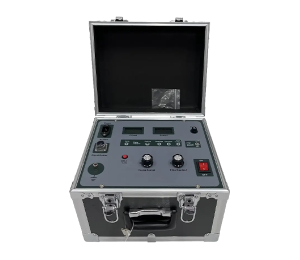 English
English


flash point of petroleum product
Understanding the Flash Point of Petroleum Products Significance and Safety Measures
The flash point of a substance is a crucial physical property, particularly for petroleum products, as it indicates the lowest temperature at which vapor can ignite in air when exposed to an open flame or spark. This characteristic is essential for assessing the flammability and safety of various substances used across different industries, including transportation, storage, and processing of petroleum products.
Understanding the Flash Point of Petroleum Products Significance and Safety Measures
The significance of the flash point extends beyond safety; it plays a crucial role in regulatory compliance. Various governmental and industrial standards dictate the handling, transportation, and storage of petroleum products based on their flash points. Products with lower flash points often require more stringent controls and protective measures to mitigate risks. For instance, the Occupational Safety and Health Administration (OSHA) and the Environmental Protection Agency (EPA) provide guidelines that dictate how these substances should be stored and handled in occupational environments to protect workers and the public.
flash point of petroleum product

In practical applications, the flash point is determined through standardized tests, such as the Pensky-Martens closed cup method or the Cleveland open cup method. These tests help to establish a reliable flash point measurement, allowing industries to classify materials according to their safety profiles accurately. This classification is crucial when developing safety data sheets (SDS), which provide essential information on the handling and potential hazards associated with petroleum products.
With increasing environmental awareness and stricter regulations, the relevance of monitoring flash points has risen in the context of spill response and environmental protection. For example, in the event of a fuel spill, understanding the flash point can help responders evaluate fire risks and take appropriate precautions while conducting clean-up operations. Furthermore, regulations often necessitate the proper labeling and storage of petroleum products according to their flash points, ensuring that facilities maintain compliance and promote a culture of safety.
However, managing and adhering to flash point considerations can be challenging. As petroleum products are widely used, improper storage or handling can lead to accidents, fires, and significant environmental damage. Consequently, industries are investing in training programs, safety audits, and the implementation of best practices to improve knowledge and awareness around the importance of flash points. Employees are often trained to understand the specific flash points of the materials they handle and the appropriate responses to potential hazards.
In conclusion, the flash point of petroleum products is more than just a scientific measure; it represents a critical aspect of safety, regulatory compliance, and environmental stewardship. By understanding the importance of flash points, industries can implement effective safety measures, reduce risks associated with flammable substances, and contribute to a safer working environment. As technology and regulations continue to evolve, maintaining an emphasis on this property will remain essential in mitigating potential hazards related to petroleum products.
-
Differences between open cup flash point tester and closed cup flash point testerNewsOct.31,2024
-
The Reliable Load Tap ChangerNewsOct.23,2024
-
The Essential Guide to Hipot TestersNewsOct.23,2024
-
The Digital Insulation TesterNewsOct.23,2024
-
The Best Earth Loop Impedance Tester for SaleNewsOct.23,2024
-
Tan Delta Tester--The Essential Tool for Electrical Insulation TestingNewsOct.23,2024





